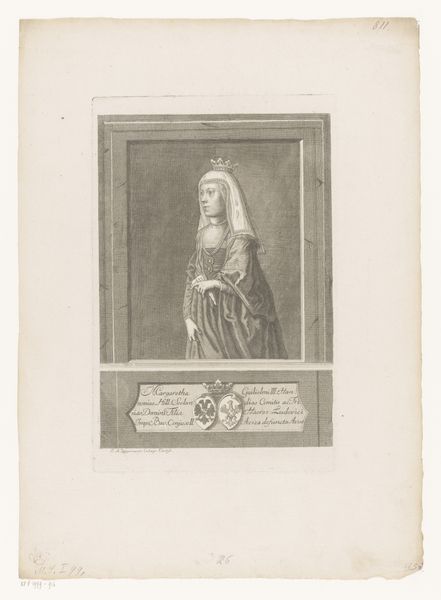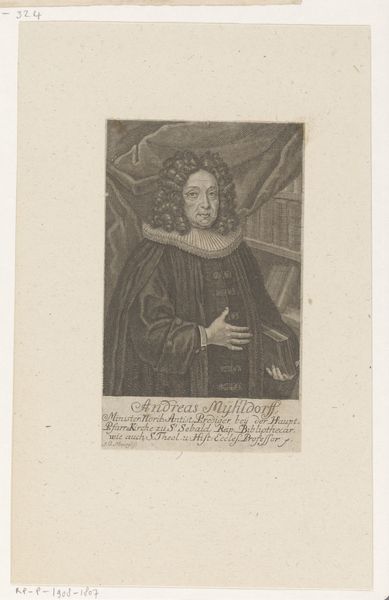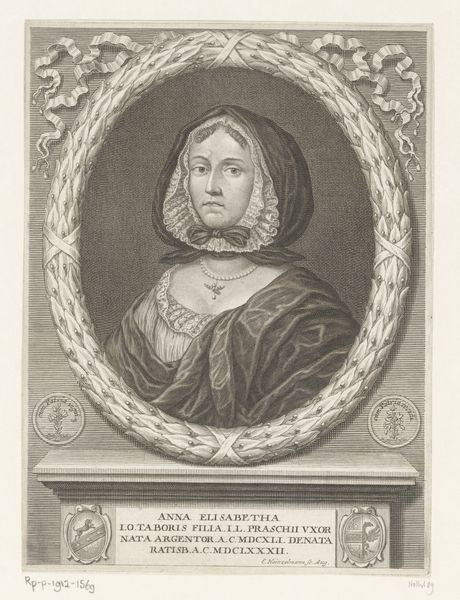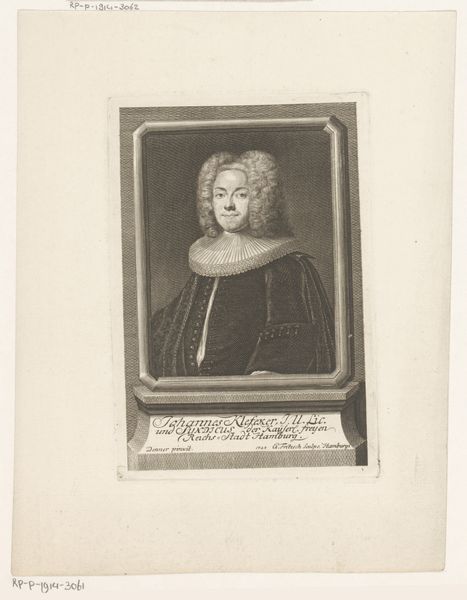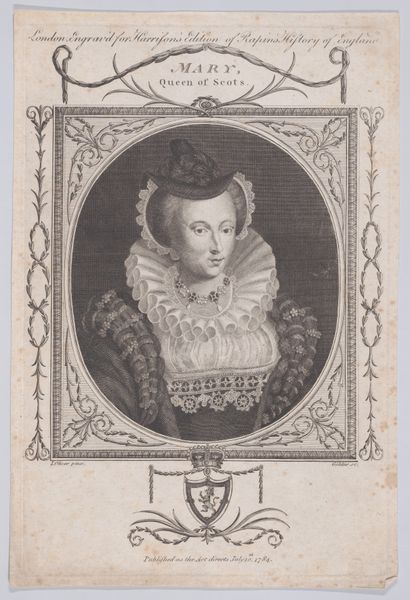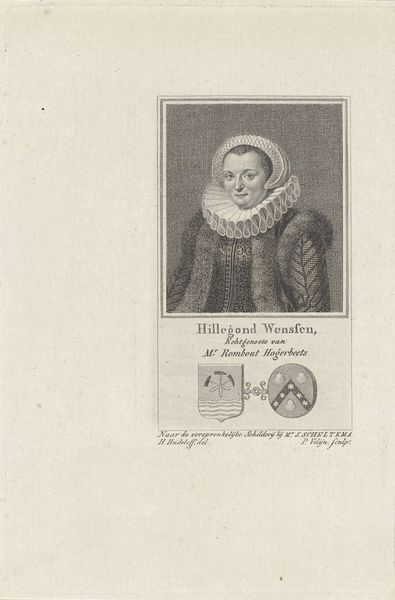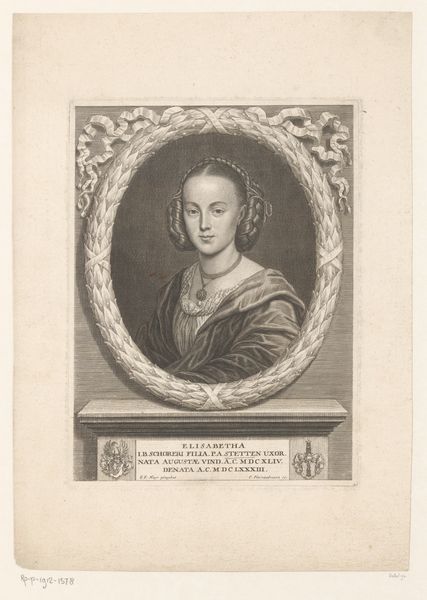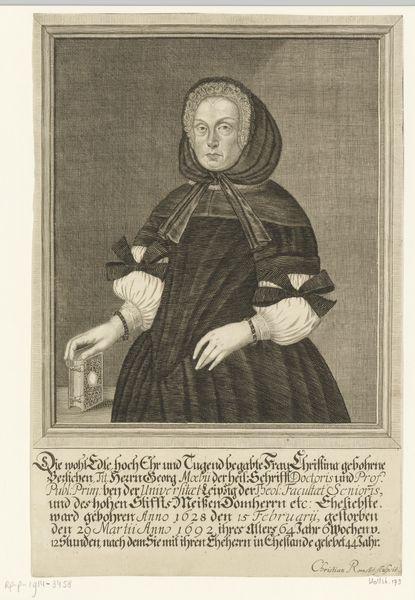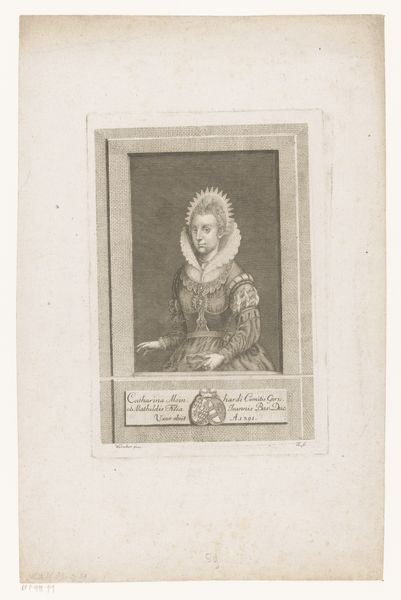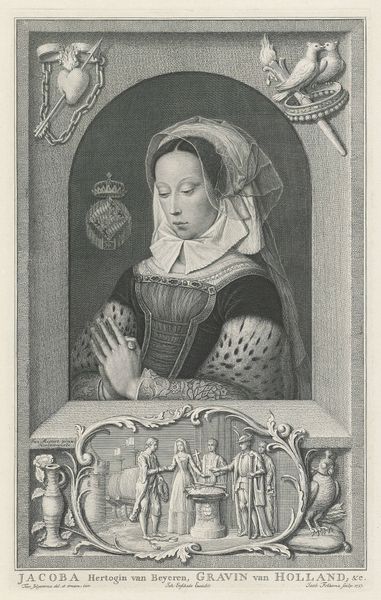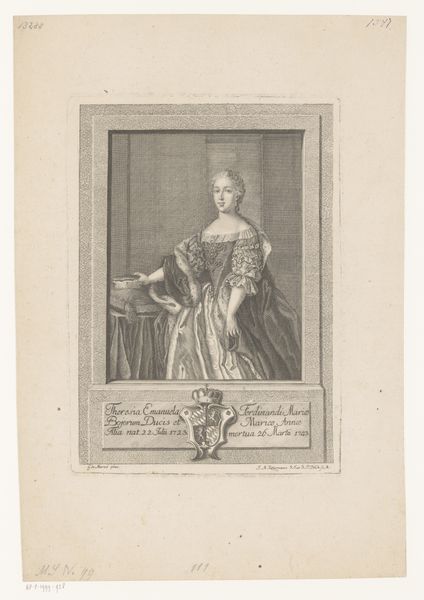
print, engraving
#
portrait
#
aged paper
#
baroque
# print
#
old engraving style
#
engraving
Dimensions: height 160 mm, width 104 mm
Copyright: Rijks Museum: Open Domain
Curator: This is "Portret van Martha Luther-Blumenstengel," a 1733 engraving by Johann Georg Mentzel. Its precise lines, created by carving into a metal plate, showcase a technical process reflecting a period where printmaking was a key tool for disseminating images and ideas. Editor: Right, it’s amazing how detailed he could get! What do you find most compelling about it? Curator: The printmaking process itself is so central here. Each line meticulously etched by hand signifies labour and skill. The resulting image, circulated widely, carried the weight of societal values, class, and identity. Even the support– paper— was produced through its own specific form of labour, transforming raw materials into a consumable format. How do you think that changes our reception of the work today? Editor: It makes me think about access. Prints democratized images in a way paintings couldn't, making portraits available beyond the wealthy elite. So the materials directly impacted who saw it. Curator: Precisely. Consider also the ruff and the jewels; these weren’t simply fashionable. They signaled a level of social status attainable, or aspired to, through certain forms of labour and trade. Who do you think determined the standards and meanings? Editor: I suppose that patrons and engravers colluded to define this portrait style together. Curator: Indeed! The artist and patron participated in this visual representation to ensure she fit their definition of respectability. This small print holds vast socio-economic information. Editor: That’s a good point; it highlights the fascinating relationships between artistic labor, the economics of printmaking, and the social communication embedded in the final image.
Comments
No comments
Be the first to comment and join the conversation on the ultimate creative platform.

